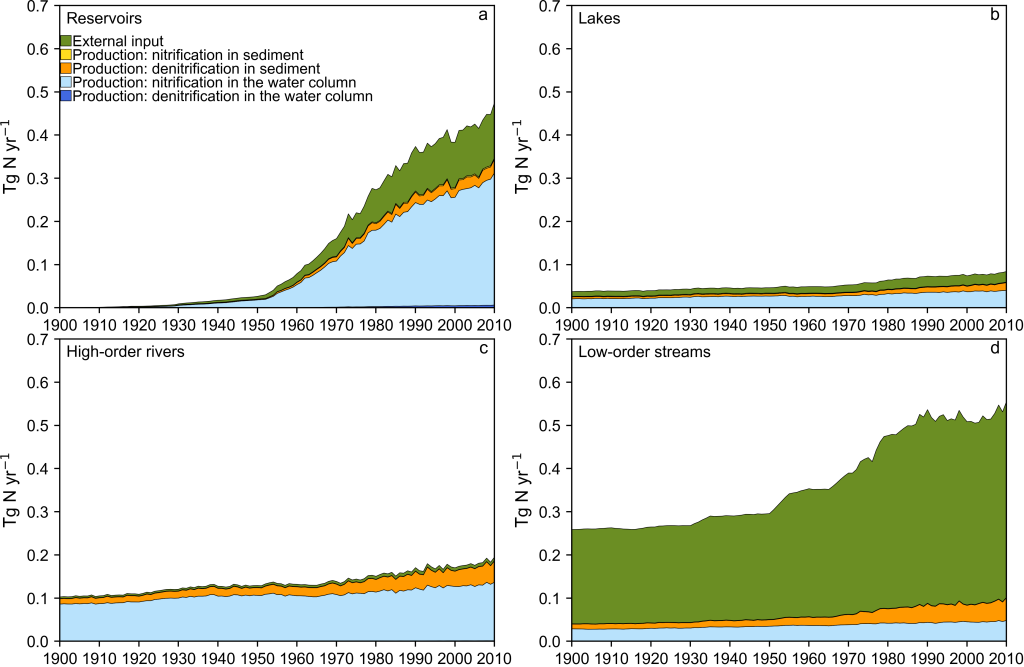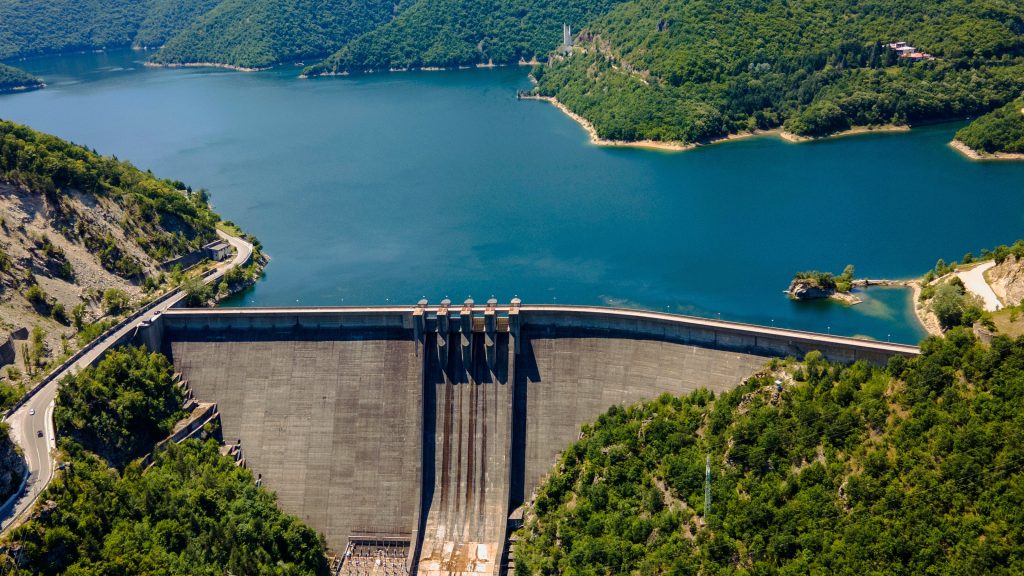Increasing N2O emissions from dammed reservoirs
Strong greenhouse gas emissions from streams and reservoirs have tripled, new NESSC research shows.
The Earth’s warming climate is largely caused by the rise in greenhouse gases carbon dioxide and methane. However, there are additional gases capable of warming the planet. New research from NESSC scientists at Utrecht University reveals that emissions of the potent greenhouse gas nitrous oxide (N2O) from streams and reservoirs have more than tripled over the last century. The scientists show that emissions have climbed up mainly due to the use of fertilisers and the creation of dammed water reservoirs. As more and more dams for hydropower are being planned, the researchers expect emissions of this strong greenhouse gas to rise even further in the future.

The greenhouse gas nitrous oxide (N2O) already contributes about one tenth of the global warming. The gas forms, among others, as a by-product of the combustion of fossil fuels and is hundreds of times stronger than carbon dioxide. But climate researchers have long suspected that the increased use of fertilizers, which contains nitrogen, could translate into increasing emissions of nitrous oxide from freshwater, like streams, rivers, lakes and water reservoirs.
In a breakthrough study, now published online in the journal Environmental Science & Technology, NESSC researchers Junjie Wang and Jack Middelburg (Utrecht University), together with PBL, the Netherlands Environmental Assessment Agency, have modelled nitrous oxide emissions from different freshwater sources around the world from 1900 till 2010. The researchers used an innovative model to map step by step the many chemical, biological and physical processes involved in producing nitrous oxide.

Groundwater
Since the 1950s, with the start of an increased use of synthesised fertilisers to boost crop yields, emissions of nitrous oxide from freshwater sources have more than tripled, their results show. In particular, two notable sources showed increased emissions: groundwater and dammed reservoirs. “It is difficult to measure production and emissions from these sources, and there are few measurements available for the same location or for a longer period of time. The role of groundwater as a source of nitrous oxide was previously not seen as important for the freshwater system,” tells dr. Junjie Wang (Utrecht University). Particularly surprising was the important role of tiny streams or drains which emit nitrous oxide when groundwater reaches surface water.
Hydropower
The other notable result was the sharp increase of nitrous oxide emissions from dammed water reservoirs, like hydroelectric dams. Emissions from dammed reservoirs have increased by nearly a factor of ten over time over the past 70 years, the study finds. Wang: “Water reservoirs already form an important source of nitrous oxide to the atmosphere. This is alarming, as many more dammed reservoirs are planned to be constructed in the future.”
The problem with water reservoirs, Wang explains, is that their chemistry changes as time goes by. “Biological conditions in a reservoir are not stable: organic matter and sediments start to pile up, the oxygen content in the water columns changes over time. At a certain point, conditions become favourable for an increasing production of nitrous oxide.”
As many hydroelectric dams are still planned to be constructed in the future, the researchers expect that nitrous oxide emissions from reservoirs will continue to rise. How these emissions will ultimately affect the warming climate remains unclear from this study, the researchers underline. Wang: “We don’t know if nitrous oxide emissions from water reservoirs used for hydropower cause a larger greenhouse effect than what we reduce on carbon dioxide emissions related to electricity generation.”
Article
Inland waters increasingly produce and emit nitrous oxide
Wang, L. Vilmin, J. M. Mogollón, A.H.W Beusen, W.J van Hoek, X. Liu, P. A. Pika, J.J. Middelburg, A.F. Bouwman
Environmental Science & Technology, 2023.
https://doi.org/10.1021/acs.est.3c04230


